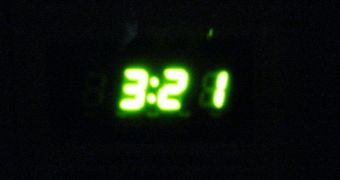A group of investigators with the School of Medicine at the Johns Hopkins University (JHU) has recently published a new study on the neural differences observable in the brains of people suffering from insomnia, as opposed to their peers who do not have this condition. The work sheds more light on the fundamental neural intricacies underlying this disease.
The work was focused exclusively on patients suffering from chronic insomnia. Upon scanning the brains of test participants, scientists discovered that key differences exist between the insomniac and normal brain when it comes to areas of the cortex that control movement. This was a rather unexpected finding, the team says.
The leader of the investigation, JHU assistant professor of neurology Rachel E. Salas, MD, says that insomnia is not really a nighttime disorder, but rather a mental condition that acts throughout the day. She likens this condition to a light switch that is always on and cannot be turned off.
What this study basically does is provide a series of new information on the differences underlying this static mechanism and on the reasons why it cannot be turned off. Scientists have long suspected that several processes in the brain must play a role in this inability of insomniacs to power down during the night, but tangible, relevant data on this issue has been largely missing until now.
According to Salas, the brains of people with chronic insomnia featured a motor cortex that was more plastic, or more adapted to change, than the motor cortex of people without this disorder. At the same time, neurons in this area of the brain were found to be more excitable in insomniacs.
“This adds evidence to the idea that insomniacs are in a constant state of heightened information processing that may interfere with sleep,” the team writes in the latest issue of the journal Sleep.
The investigation was carried out on 28 adults, 18 of which suffered from chronic depression. Researchers used transcranial magnetic stimulation (TMS), a technique approved by the US Food and Drug Administration (FDA) for treating depression, to deliver non-painful electrical stimuli right into the areas of the motor cortex they were interested in studying.
“The origins of the increased plasticity in insomniacs is unclear, it is not known whether the increase is the cause of insomnia. It is also unknown whether this increased plasticity is beneficial, the source of the problem or part of a compensatory mechanism to address the consequences of sleep deprivation associated with chronic insomnia,” Salas explains.
She also highlights the fact that an overarching treatment against insomnia may prove impossible to find. TMS may help, Salas concludes, by reducing the excitability of motor cortex neurons in patients, PsychCentral reports.

 14 DAY TRIAL //
14 DAY TRIAL //